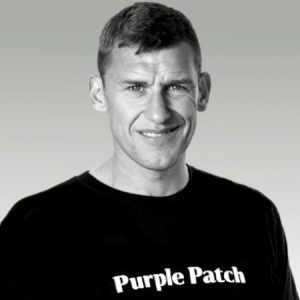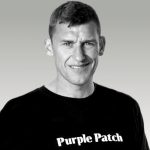
Matt Dixon
Guest is known for...
Matt Dixon is an Ironman University Master Coach and founder of Purple Patch Fitness, which offers customized training for athletes of all levels including multiple world champions and busy executives. He is also a former professional triathlete and author of two books, Fast-Track Triathlete and The Well-Built Triathlete, and has been featured in various publications.
Here's what I will learn...
Matt Dixon, Ironman University Master Coach and founder of Purple Patch Fitness, spoke about his transition from athlete to coach to organization builder, coaching elite athletes and time-starved business leaders, the importance of mental strength, dealing with the “wall,” rest and rejuvenation, and more. He also discussed why toughness is not a differentiator at the very top.
LISTEN TO THE FULL CONVERSATION
From the Podcast
Matt speaks about the similarities across and differences between how elite athletes and time starved CEOs approach training for triathlon. He makes the distinction between the individuals that check boxes and those that really use this as a springboard to thrive in their mission.
Matt discusses how he stays on top of adjacent disciplines such as nutrition, sleep science, strength and conditioning and other related topics to be relevant in the work he does. He also reflects on the learning opportunities in working with the athletes and coaches that he trains at Purplepatch Fitness.
Matt speaks about the transition from being a Triathlete to being a Coach and to being a Business Owner. He speaks about how he thought about the choices at each of these transition points and what made him go down this path.
Matt speaks about how athletes come to him with excellence in one or two domains (cycling, running, swimming) but have to quickly come up to speed in a totally different area to be competitive in a multi-sport context. We discuss the parallels between this and how Functional leaders need to transition to General Managers.
Matt mentions that in the “thin air of world-class performers” toughness is not a differentiator and speaks about the importance of training and rejuvenation in creating the recipe for sustained and consistent performance at the very top.
Matt speaks about how he works with athletes to expand their mental reservoir that they can tap into during a big event. He also delves into the detail behind how successful athletes debrief after a failure. He speaks about the importance of a grieving window and the need for perspective where the coach could offer significant value.
Matt speaks about his take on terms such as Visualization and Meditation and speaks about how he relates to them. He specifically discusses a ritual of a 7-15 minute quiet time that he practices every day and speaks about the benefits of this exercise in improving one’s performance in a certain.
Matt speaks about how athletes deal with “the wall” which often happens when you deplete your stored glycogen (carbohydrate stored in our muscles) and the negativity and the feelings of fatigue that come with it. He also speaks about how he gets athletes to deal with pain and the nature of the relationship they could develop with pain to derive the performance that they desire.
Matt Dixon speaks at length about the criticality of rest and rejuvenation. He specifically speaks about some of the qualitative and quantitative considerations around having a restful night’s sleep to be effective in our functioning on a sustained basis in our various domains of life.
